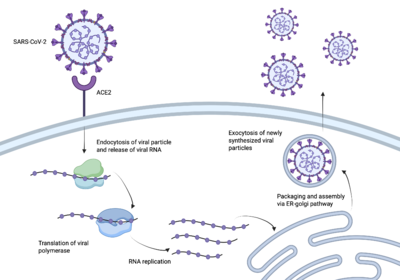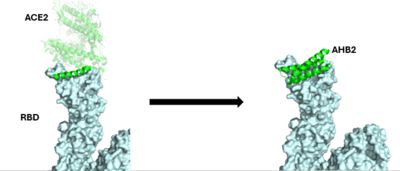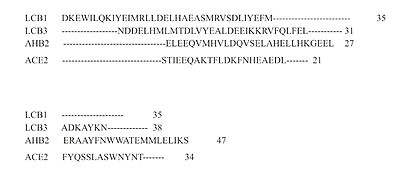Introduction

The process of the SARS-CoV-2 spike protein entering human cells.
SARS-CoV-2 better known as Covid-19 sent the world into a global pandemic due to its rapid transmission and infection [1]. In order to create a vaccine, it was essential to understand how SARS-CoV-2 infected us.
The enzyme angiotensin converting enzyme 2 is attached to our cell membranes and then can be bound to a receptor binding domain [2]. The spike protein of SARS-CoV-2 enters our bodies and , allowing the spike protein access to ACE2 and our host cells [3]. Once the spike protein has access to our host cells, it is able to further infect our cells and spread the virus throughout our bodies, causing us to get sick. In order to create an effective vaccine, the pathway between the spike protein and the RBD needed to be interrupted.
Vaccines
A common way to create vaccines is through the usage of antibodies. are inserted into the body that mimic ACE2, due to the similarities with ACE2, when COVID-19 spike protein enters the body, they to these ACE2 mimicking antibodies that create a 90% neutralizing response for targeting the RBD. With this being said, this method of treatment is difficult for long term use due to the evolution of the viral cells [4].
Inhibitor Development
Protein inhibitors were thought of as a new idea for creating vaccines due to their smaller size and better stability compared to antibody vaccines[5]. These protein inhibitors are also referred to as mini-binders, they interact with the ACE2 receptor binding domain,
Their Discovery

The use of the Rosetta Blueprint protein design to create the AHB2 inhibitor.
The first mini-binder to be created to combat COVID-19 is called AHB2. In order to ensure that the mini-binder would bind to the same RBD that the ACE2 was bound to, AHB2 was designed by looking at sequence of ACE2 alpha-helix that makes interactions with spike receptor binding domain. This design process is referred to as the Rosetta Blueprint protein design [5].

The use of the De Novo protein design to create the LCB1 and LCB3 inhibitors.
As the AHB2 inhibitors were tested and found to be effective, it was then time to manipulate the mini-binders to create a more effective vaccine. A rotamer interaction field docking with in silico mini-proteins were used by using a scaffold library to generate binders to more distinct regions of the RBD surface [5]. This method is known as the de novo protein design and it is how the LCB1 and LCB3 mini-binders were created.
Binding Site and Interactions
Inhibitor Differences

The sequence differences between ACE2, AHB2, LCB1and LCB3.
Stability
One of the most important findings with these DeNovo proteins is their high stability, allowing for less delicate forms of administration.
,
, and




